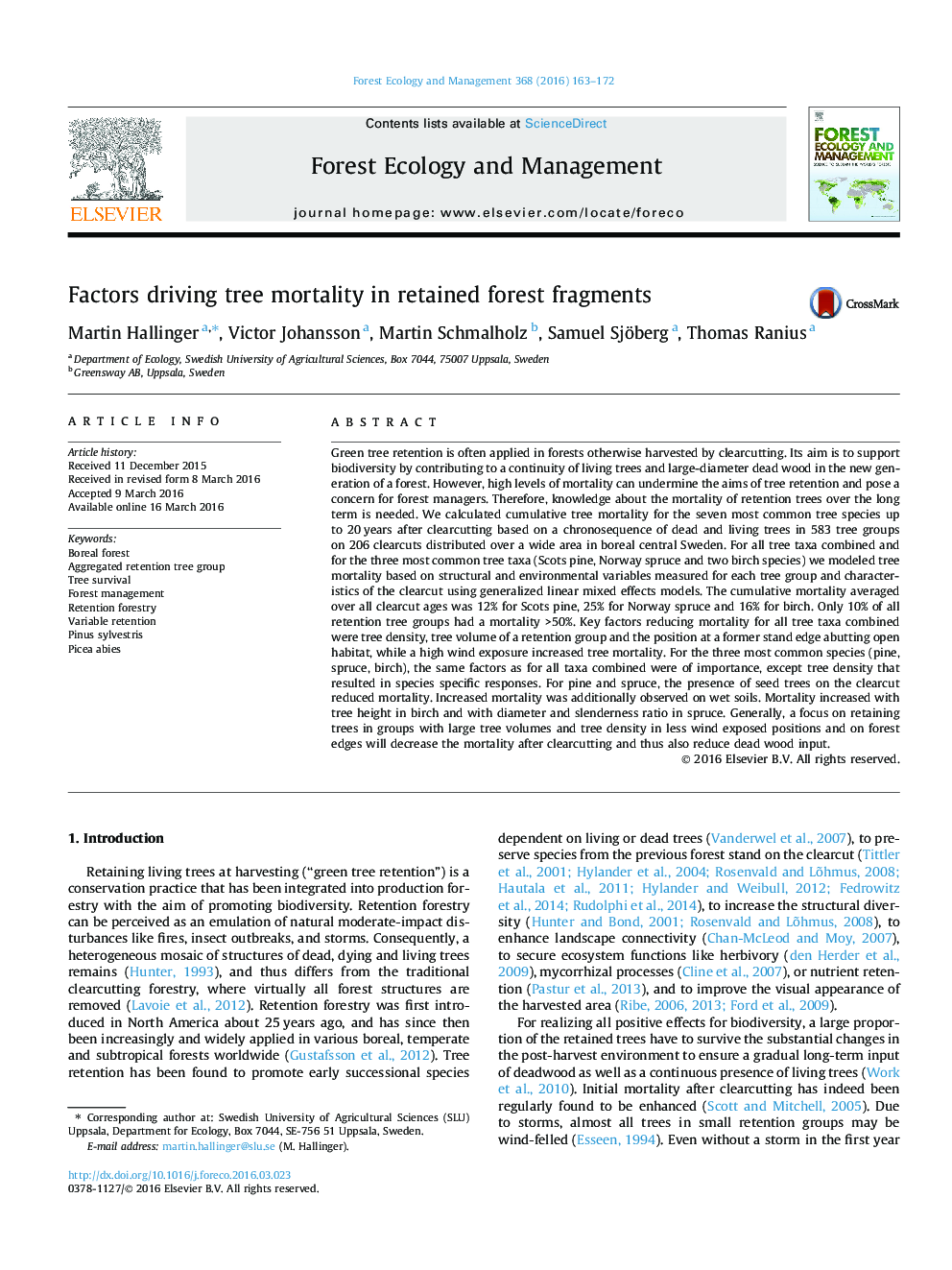| کد مقاله | کد نشریه | سال انتشار | مقاله انگلیسی | نسخه تمام متن |
|---|---|---|---|---|
| 85960 | 159153 | 2016 | 10 صفحه PDF | دانلود رایگان |
• Cumulative tree mortality was 12% for pine, 25% for spruce and 16% for birches.
• Mortality increased on wet soils and under high wind exposure.
• Mortality decreased with increasing tree volume in retention groups.
• Mortality decreased on former stand edges abutting open habitats.
• Mortality decreased on clearcuts with seed trees.
Green tree retention is often applied in forests otherwise harvested by clearcutting. Its aim is to support biodiversity by contributing to a continuity of living trees and large-diameter dead wood in the new generation of a forest. However, high levels of mortality can undermine the aims of tree retention and pose a concern for forest managers. Therefore, knowledge about the mortality of retention trees over the long term is needed. We calculated cumulative tree mortality for the seven most common tree species up to 20 years after clearcutting based on a chronosequence of dead and living trees in 583 tree groups on 206 clearcuts distributed over a wide area in boreal central Sweden. For all tree taxa combined and for the three most common tree taxa (Scots pine, Norway spruce and two birch species) we modeled tree mortality based on structural and environmental variables measured for each tree group and characteristics of the clearcut using generalized linear mixed effects models. The cumulative mortality averaged over all clearcut ages was 12% for Scots pine, 25% for Norway spruce and 16% for birch. Only 10% of all retention tree groups had a mortality >50%. Key factors reducing mortality for all tree taxa combined were tree density, tree volume of a retention group and the position at a former stand edge abutting open habitat, while a high wind exposure increased tree mortality. For the three most common species (pine, spruce, birch), the same factors as for all taxa combined were of importance, except tree density that resulted in species specific responses. For pine and spruce, the presence of seed trees on the clearcut reduced mortality. Increased mortality was additionally observed on wet soils. Mortality increased with tree height in birch and with diameter and slenderness ratio in spruce. Generally, a focus on retaining trees in groups with large tree volumes and tree density in less wind exposed positions and on forest edges will decrease the mortality after clearcutting and thus also reduce dead wood input.
Figure optionsDownload as PowerPoint slide
Journal: Forest Ecology and Management - Volume 368, 15 May 2016, Pages 163–172
